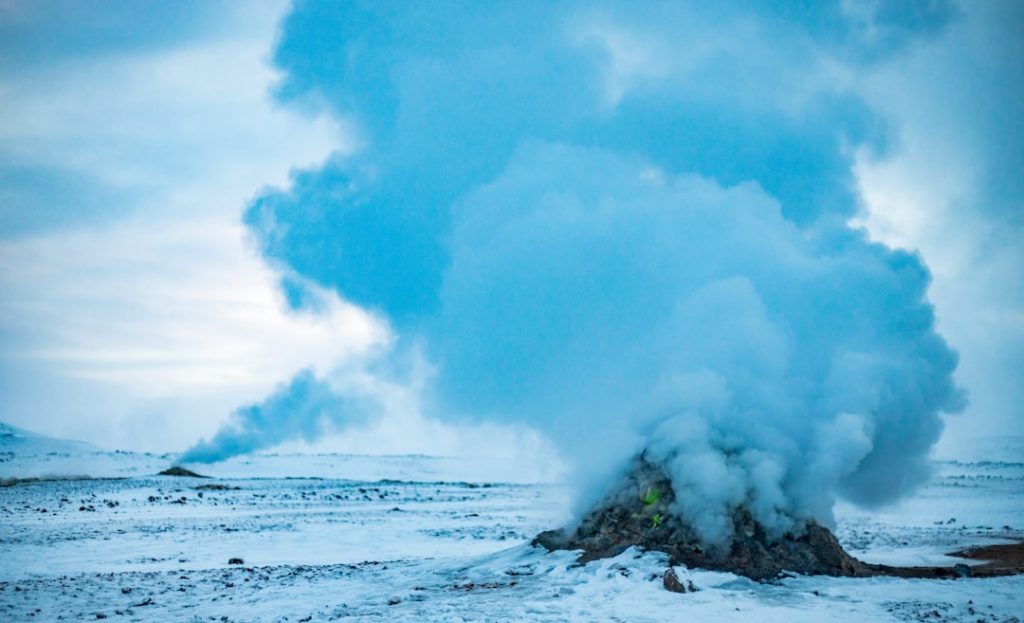**The Evolution and Impact of Steam Generators in Industrial Operations**
Summary
- Steam generators have been used in industrial operations for centuries, with the first recorded use dating back to ancient Greece and Egypt.
- Using steam generators in industrial processes can lead to increased efficiency, reduced energy costs, and improved product quality.
- Steam generators are revolutionizing industrial operations by providing a clean and sustainable source of energy for various applications.
- There are different types of steam generators, including fire-tube boilers, water-tube boilers, and electric steam generators, each with their own unique applications in industrial settings.
- While steam generators offer many benefits, it’s important to consider their environmental impact and implement measures to minimize emissions and energy consumption.
The journey of steam generators in industrial operations is a fascinating tale that intertwines innovation, necessity, and the relentless pursuit of efficiency. The origins of steam power can be traced back to the early 18th century, with Thomas Newcomen’s atmospheric engine marking a significant milestone in harnessing steam for practical use. This invention laid the groundwork for the development of more sophisticated steam engines, which would eventually evolve into the steam generators we recognise today.
By the time the Industrial Revolution took hold in the late 18th and early 19th centuries, steam power had become the backbone of industrialisation, driving machinery in factories, powering locomotives, and facilitating maritime transport. As industries expanded, so did the need for more efficient and reliable sources of steam. The introduction of the steam boiler in the 19th century marked a pivotal moment in this evolution.
These boilers were designed to generate steam at higher pressures and temperatures, significantly enhancing their efficiency and output. The advent of the water-tube boiler further revolutionised steam generation by allowing for quicker heating times and improved safety features. Over the decades, advancements in materials and engineering have led to the development of modern steam generators that are not only more efficient but also capable of meeting the diverse needs of various industrial sectors.
Advantages of Using Steam Generators in Industrial Processes
The advantages of employing steam generators in industrial processes are manifold, making them an indispensable asset in many sectors. One of the most significant benefits is their ability to provide a consistent and controllable source of heat. This reliability is crucial for processes that require precise temperature management, such as in food processing, chemical manufacturing, and pharmaceuticals.
The ability to generate steam on demand allows industries to optimise their operations, reducing downtime and increasing productivity. Moreover, steam generators are known for their versatility. They can be used for a wide range of applications, from heating and sterilisation to power generation and propulsion.
This adaptability means that industries can tailor their steam generation systems to meet specific operational needs, thereby enhancing overall efficiency. Additionally, steam is a clean energy carrier; when produced from renewable sources or natural gas, it can significantly reduce greenhouse gas emissions compared to other fossil fuels. This aspect aligns with the growing emphasis on sustainability within industrial operations, making steam generators an attractive option for companies looking to minimise their environmental footprint.
How Steam Generators are Revolutionizing Industrial Operations

In recent years, steam generators have been at the forefront of a revolution in industrial operations, driven by technological advancements and a shift towards more sustainable practices. The integration of automation and smart technology into steam generation systems has transformed how industries manage their energy consumption. Modern steam generators are equipped with sensors and control systems that allow for real-time monitoring and adjustments, ensuring optimal performance while minimising waste.
This level of control not only enhances efficiency but also contributes to significant cost savings over time. Furthermore, the rise of combined heat and power (CHP) systems has further amplified the role of steam generators in industrial settings. By simultaneously generating electricity and useful heat from the same energy source, CHP systems maximise energy efficiency and reduce reliance on external power supplies.
This dual functionality is particularly beneficial for industries with high energy demands, such as manufacturing and food processing. As companies increasingly seek to enhance their operational resilience and reduce energy costs, the adoption of steam generators within CHP systems is likely to continue growing.
Different Types of Steam Generators and Their Applications
| Steam Generator Type | Application |
|---|---|
| Fire Tube Boilers | Used in small to medium-sized industrial applications |
| Water Tube Boilers | Ideal for high-pressure steam applications in power plants and industrial processes |
| Once-Through Boilers | Commonly used in combined cycle power plants and large industrial processes |
| Electric Steam Generators | Used in small-scale applications such as food processing, laboratories, and healthcare facilities |
| Solar Steam Generators | Utilised in solar power plants and industrial processes requiring low to medium pressure steam |
Steam generators come in various types, each designed to cater to specific industrial applications. The most common types include fire-tube boilers, water-tube boilers, electric steam generators, and biomass boilers. Fire-tube boilers are typically used in smaller operations due to their simplicity and ease of maintenance.
They consist of a series of tubes through which hot gases pass, heating the water surrounding them to produce steam. These boilers are ideal for applications requiring moderate pressure and temperature. On the other hand, water-tube boilers are favoured in larger industrial settings where high-pressure steam is necessary.
In these systems, water circulates through tubes that are heated externally by combustion gases. This design allows for greater efficiency and faster response times, making them suitable for industries such as power generation and chemical processing. Electric steam generators offer a clean alternative by using electricity to heat water directly, making them ideal for applications where emissions must be minimised.
Lastly, biomass boilers utilise organic materials as fuel, providing a sustainable option for industries looking to reduce their carbon footprint while generating steam.
The Environmental Impact of Using Steam Generators in Industrial Settings
The environmental impact of steam generators is a critical consideration as industries strive to adopt more sustainable practices. When operated efficiently and powered by renewable energy sources, steam generators can significantly reduce greenhouse gas emissions compared to traditional fossil fuel-based systems. For instance, biomass boilers not only utilise waste materials but also contribute to a circular economy by converting organic waste into energy.
This approach not only mitigates landfill waste but also reduces reliance on non-renewable resources. However, it is essential to acknowledge that the environmental benefits of steam generators depend largely on their design, operation, and fuel source. Poorly maintained systems can lead to inefficiencies that result in higher emissions and energy consumption.
Therefore, regular maintenance and adherence to best practices are crucial for maximising the environmental advantages of steam generation. As industries continue to face pressure from regulators and consumers alike to reduce their environmental impact, investing in modern, efficient steam generation technologies will be paramount.
Safety Considerations When Implementing Steam Generators in Industrial Operations

Safety Risks Associated with Steam Generation
Safety is of paramount importance when implementing steam generators in industrial operations due to the high pressures and temperatures involved in their operation. The potential hazards associated with steam generation include explosions, burns, and equipment failure if not properly managed.
Regular Maintenance and Inspections
Regular inspections and maintenance are critical components of a robust safety strategy. This includes checking for leaks, ensuring proper pressure levels, and maintaining safety valves and controls. Additionally, training personnel on safe operating procedures is vital to prevent accidents and ensure that everyone involved understands the risks associated with steam generation.
Fostering a Culture of Safety and Compliance
By fostering a culture of safety and compliance within their operations, industries can mitigate risks while reaping the benefits of efficient steam generation.
The Future of Steam Generators in Industrial Operations
Looking ahead, the future of steam generators in industrial operations appears promising as technological advancements continue to reshape the landscape. Innovations such as advanced materials that withstand higher pressures and temperatures are being developed, allowing for even more efficient steam generation systems. Furthermore, the integration of artificial intelligence (AI) into steam generation processes holds great potential for optimising performance and predictive maintenance.
As industries increasingly prioritise sustainability, there is likely to be a growing emphasis on renewable energy sources for steam generation. The transition towards electrification and green hydrogen production could redefine how steam is generated in the future. These developments will not only enhance efficiency but also align with global efforts to combat climate change by reducing reliance on fossil fuels.
Case Studies of Successful Implementation of Steam Generators in Industrial Settings
Numerous case studies illustrate the successful implementation of steam generators across various industrial settings, showcasing their versatility and effectiveness. One notable example is a large food processing plant that transitioned from traditional heating methods to a modern biomass boiler system. This shift not only reduced their carbon emissions by over 30% but also resulted in significant cost savings on energy bills due to lower fuel costs.
Another compelling case involves a chemical manufacturing facility that integrated a combined heat and power (CHP) system with its existing steam generator infrastructure. By utilising waste heat from the steam generation process to produce electricity, the facility achieved remarkable energy efficiency improvements while reducing its overall environmental impact. These examples highlight how strategic investments in modern steam generation technologies can lead to enhanced operational efficiency while supporting sustainability goals.
In conclusion, the history and evolution of steam generators in industrial operations reflect a journey marked by innovation and adaptation. As industries continue to embrace these technologies, they unlock new possibilities for efficiency, sustainability, and safety within their operations. With ongoing advancements on the horizon, it is clear that steam generators will remain a vital component of industrial processes well into the future.
FAQs
What is an industrial steam generator?
An industrial steam generator is a device that produces steam for various industrial processes, such as heating, sterilization, and power generation. It typically consists of a boiler, a heat source, and a system for distributing the steam to where it is needed.
How does an industrial steam generator work?
An industrial steam generator works by heating water to produce steam. This is usually achieved by burning a fuel, such as natural gas, diesel, or biomass, in a boiler. The heat from the fuel is used to boil the water and create steam, which is then distributed through pipes to the desired location.
What are the applications of industrial steam generators?
Industrial steam generators are used in a wide range of applications, including power generation, heating and cooling systems, food processing, chemical processing, and pharmaceutical manufacturing. They are also used in various industrial processes that require high-temperature steam.
What are the different types of industrial steam generators?
There are several types of industrial steam generators, including fire tube boilers, water tube boilers, and electric boilers. Each type has its own advantages and is suitable for different applications and industries.
What are the benefits of using an industrial steam generator?
Using an industrial steam generator offers several benefits, including high efficiency, reliability, and the ability to produce large quantities of steam for industrial processes. They also provide precise control over steam temperature and pressure, making them suitable for a wide range of applications.

